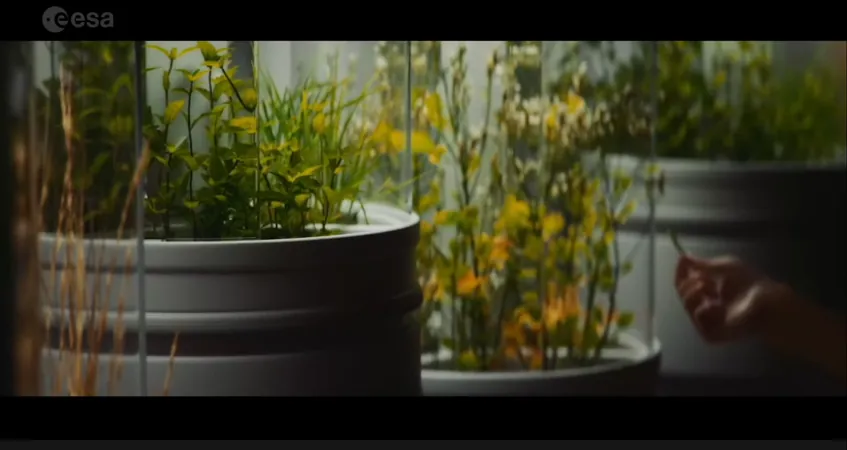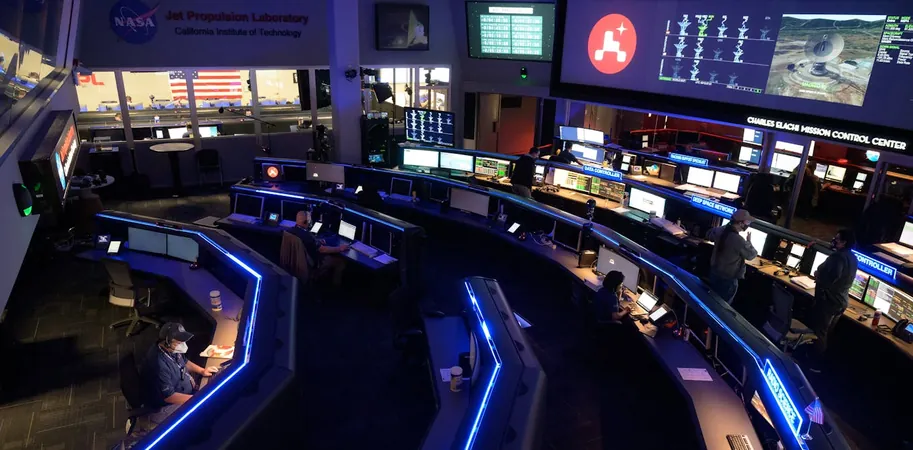
Astronauts Could Sip Tea on the Moon: A New Frontier in Space Agriculture
2025-09-22
Author: Benjamin
A New Age of Space Exploration Awaits!
With the ambitious goal of returning astronauts to the Moon, space agencies like NASA, ESA, and CNSA are preparing for a groundbreaking reentry after over five decades. Unlike the swift supply runs to the International Space Station, resupplying lunar missions presents a complex challenge, requiring advanced technology and significant resources.
In-Situ Resource Utilization: The Key to Lunar Survival
To support long missions on the Moon, agencies are shifting towards In-Situ Resource Utilization (ISRU), utilizing local resources for essentials like water, building materials, and even food. The Moon's polar regions, rich in water ice, can provide the crucial water and propellant needed. Remarkably, new research suggests that not only can they harvest materials, but they can also grow food like tea!
Growing Tea in Lunar Soil: A Groundbreaking Study
A fascinating study led by Professor Nigel Mason and Dr. Sara Lopez-Gomollon from the University of Kent reveals the potential for growing tea leaves in simulated lunar soil. Collaborating with Dartmoor Estate Tea and Lightcurve Films, the team tested how tea plants thrive in conditions mimicking lunar environments.
The Experiment: Tea Plants Take Root!
The researchers planted tea saplings in lunar and Martian soil simulants, comparing their growth to those in traditional Devonian soil. The results were promising—the tea plants in lunar soil flourished, while the Martian variants struggled. This discovery is a tantalizing prospect for astronauts on missions through NASA’s Artemis Program.
Tea Time on the Moon: A Taste of Home
Professor Mason stated, "As we venture into an era focusing on establishing bases on the Moon or even Mars, understanding our food sources becomes critical. These findings show that we can potentially cultivate tea in lunar greenhouses, providing astronauts access to fresh food—an essential comfort for space travelers!"
Beyond Space: Earthly Implications of the Research
This innovative research doesn't just have cosmic implications; it shines a light on agricultural challenges here on Earth. The insights gained from how plants adapt to harsh extraterrestrial conditions could aid in restoring arable land and enhancing crop resilience amidst climate change challenges.
Looking Ahead: The Future of Space Agriculture
The next phase of research will further explore the inner workings of plants grown in lunar soil. Dr. Lopez-Gomollon expressed enthusiasm for extending these experiments to other crops, aiming to prepare humanity for longer space missions while simultaneously addressing agricultural issues on our planet.
Conclusion: A Hopeful Path Forward
As humanity stands on the brink of lunar exploration, the dream of a tea break on the Moon transforms from fantasy to feasible reality. This pioneering research opens doors to not only sustaining life beyond Earth but also tackling pressing challenges back home.









 Brasil (PT)
Brasil (PT)
 Canada (EN)
Canada (EN)
 Chile (ES)
Chile (ES)
 Česko (CS)
Česko (CS)
 대한민국 (KO)
대한민국 (KO)
 España (ES)
España (ES)
 France (FR)
France (FR)
 Hong Kong (EN)
Hong Kong (EN)
 Italia (IT)
Italia (IT)
 日本 (JA)
日本 (JA)
 Magyarország (HU)
Magyarország (HU)
 Norge (NO)
Norge (NO)
 Polska (PL)
Polska (PL)
 Schweiz (DE)
Schweiz (DE)
 Singapore (EN)
Singapore (EN)
 Sverige (SV)
Sverige (SV)
 Suomi (FI)
Suomi (FI)
 Türkiye (TR)
Türkiye (TR)
 الإمارات العربية المتحدة (AR)
الإمارات العربية المتحدة (AR)